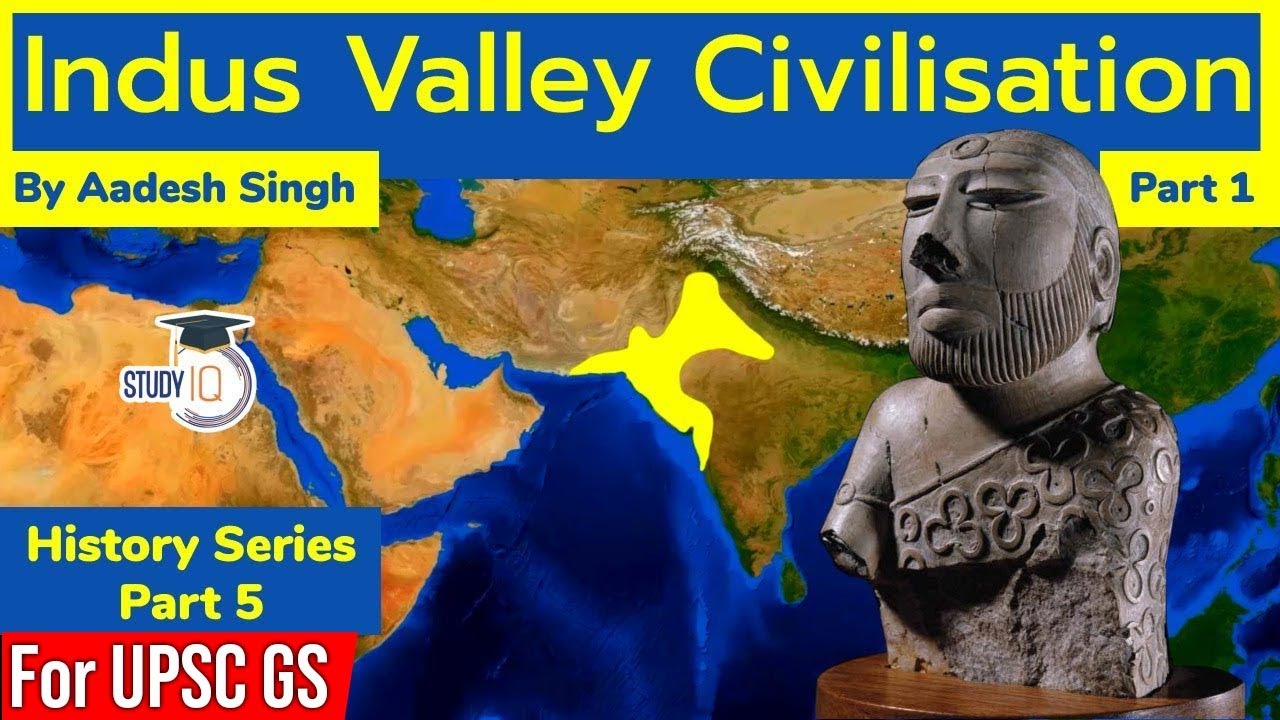Layout of The City - Mohenjo-Daro - History || Extramarks
Summary
TLDRJoin Hendron on a journey back in time to the ancient city of Mohenjo-daro, a marvel of the Indus Valley Civilization. Explore the Citadel with its fortified walls and the Great Bath, a bathing complex for the elite. Venture into the Lower Town, a bustling residential area with a sophisticated grid layout, two-story houses, and an impressive drainage system. Discover how this city managed water supply and daily life over 5,000 years ago.
Takeaways
- 🏺 **Ancient City**: The speaker, Hendron, introduces Mohenjo-daro, an ancient city from nearly 5,000 years ago.
- 🏰 **City Layout**: Mohenjo-daro was divided into two main parts: the Citadel and the Lower Town, with the exception of Kolavitola which had three parts.
- 🌐 **Citadel Significance**: The Citadel was a fortified mound and the administrative center of the city.
- 🛁 **Great Bath**: A significant structure in the Citadel was the Great Bath, likely used for bathing by the city's rulers.
- 🏘️ **Lower Town**: The Lower Town was a residential area and a hub for economic and cultural activities.
- 🏠 **Housing**: Houses in Mohenjo-daro were single or double storey with a grid-like street pattern.
- 🚿 **Sanitation**: The city had a well-planned sanitation system with drains for wastewater disposal.
- 💧 **Water Supply**: Water was supplied to the city from large public wells for bathing and washing.
- 👋 **Tour Conclusion**: Hendron concludes the tour and bids farewell to the audience.
- 📚 **Learning Experience**: The script suggests that the tour was meant to be educational and informative.
Q & A
Who is Hendron and what is the significance of his name in the script?
-Hendron is a fictional character in the script, representing a person who lived nearly 5,000 years ago in the city of Mohenjo-daro. The name Hendron is not historically significant but serves to personalize the narrative and make the ancient city's description more relatable to the audience.
What is the city of Mohenjo-daro known for?
-Mohenjo-daro is known for being one of the largest settlements of the ancient Indus Valley Civilization, showcasing advanced urban planning and architectural features for its time.
How was the city of Mohenjo-daro divided?
-The city was divided into two main parts: the Citadel, which was the higher part built on a raised hill, and the Lower Town, which was of lesser height. Except for the city of Kolavitum, which had three parts.
What was the Citadel's role in Mohenjo-daro?
-The Citadel was the nerve center of the city, surrounded by fortified walls, and contained important structures like the Great Bath, which was likely used for bathing by the city's rulers.
What was the Great Bath and its probable use?
-The Great Bath was a huge tank made watertight by plaster and natural tar, located in the Upper Town of Mohenjo-daro. It was probably used for bathing purposes by the rulers.
Describe the layout of the Lower Town in Mohenjo-daro.
-The Lower Town was the residential area where common people lived. It was a thriving economic and cultural center with single or double storey houses. The streets were laid out in a grid-like pattern, intersecting each other at right angles.
How did the houses in Mohenjo-daro's Lower Town facilitate daily life?
-Houses had separate rooms for different activities, with some rooms set aside for bathing. Wastewater from bathrooms was directed to drains that lined the inner streets, showcasing a well-planned drainage system.
What was the source of water supply for Mohenjo-daro?
-The city received its water supply from large public wells, which provided water for bathing and washing purposes for the citizens.
How does the script suggest that Mohenjo-daro was advanced for its time?
-The script suggests Mohenjo-daro's advancement through its detailed urban planning, including a well-organized grid pattern for streets, a sophisticated drainage system, and the presence of public facilities like the Great Bath and wells.
What is the script's purpose in describing Mohenjo-daro?
-The script aims to educate and engage the audience by providing a guided tour of Mohenjo-daro, highlighting how people lived in the city and showcasing the city's architectural and urban planning achievements.
Why did the city of Mohenjo-daro eventually get buried under the sands of time?
-The script does not provide specific reasons for the city's burial, but it is historically believed that a combination of factors such as climate change, decline in trade, and changes in river courses could have contributed to the city's decline and eventual abandonment.
Outlines

Esta sección está disponible solo para usuarios con suscripción. Por favor, mejora tu plan para acceder a esta parte.
Mejorar ahoraMindmap

Esta sección está disponible solo para usuarios con suscripción. Por favor, mejora tu plan para acceder a esta parte.
Mejorar ahoraKeywords

Esta sección está disponible solo para usuarios con suscripción. Por favor, mejora tu plan para acceder a esta parte.
Mejorar ahoraHighlights

Esta sección está disponible solo para usuarios con suscripción. Por favor, mejora tu plan para acceder a esta parte.
Mejorar ahoraTranscripts

Esta sección está disponible solo para usuarios con suscripción. Por favor, mejora tu plan para acceder a esta parte.
Mejorar ahoraVer Más Videos Relacionados

Mohenjo Daro 101 | National Geographic

Documentary # 16: Indus Valley Civilization | A Short Documentary

Indus Valley Civilization Part 1 - Ancient India History for UPSC | Harappa Civilization

PERADABAN SUNGAI INDUS : Mahenjo Daro dan Harappa

Rise and Fall of Indus Valley Civilization

Indus Valley Civilization: Important Sites | Complete Ancient History Through Animation | By Aadesh
5.0 / 5 (0 votes)
